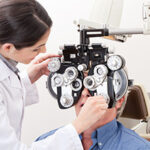Physical Medicine and Rehabilitation (PM&R) physicians, often referred to as physiatrists or Pm And R Doctors, specialize in a broad spectrum of medical conditions. These conditions affect various parts of your body, from the intricate workings of the brain and spinal cord to the strength and flexibility of bones, joints, ligaments, muscles, and tendons. The core mission of a pm and r doctor is to enhance your movement capabilities and overall quality of life. They adopt a holistic approach, considering you as an individual, not merely focusing on a single area of physical concern.
What Exactly Does a PM&R Doctor Do?
A pm and r doctor is equipped to address physical medical issues across all areas of the body. Their expertise is not limited by age, as they create customized treatment plans for individuals of any age group. When you consult a pm and r doctor, they will thoroughly evaluate your condition, taking into account your specific needs and personal goals. A crucial part of their process involves ensuring that your symptoms are not indicative of a more serious underlying medical condition. Following this comprehensive assessment, they will develop a tailored treatment strategy designed to help you achieve your desired outcomes and improve your functional abilities.
Education and Extensive Training of a Physiatrist
Becoming a pm and r doctor requires a rigorous and extensive educational journey. These professionals are first and foremost medical doctors, holding an MD or DO degree, with specialized training in physical medicine and rehabilitation. Beyond their medical school qualifications, many pm and r doctors pursue subspecialty certifications to deepen their expertise in specific areas. These specialized fields can include:
- Brain Injury Medicine: Focusing on rehabilitation after traumatic brain injuries or strokes.
- Hospice and Palliative Medicine: Providing comfort and improving quality of life for patients with serious illnesses.
- Neuromuscular Medicine: Addressing diseases affecting nerves and muscles, such as muscular dystrophy and ALS.
- Pain Medicine: Specializing in the diagnosis and management of chronic and acute pain conditions.
- Pediatric Rehabilitation Medicine: Focusing on the unique rehabilitation needs of children with disabilities or injuries.
- Spinal Cord Injury Medicine: Managing the complex needs of individuals with spinal cord injuries.
- Sports Medicine: Treating injuries and conditions related to sports and physical activity, helping athletes and active individuals recover and prevent future injuries.
The path to becoming a certified pm and r doctor involves:
- Completion of a four-year medical school program.
- A four-year postdoctoral residency specifically in physical medicine and rehabilitation.
- The initial year focuses on fundamental clinical skills essential for all medical specialties.
- The subsequent three years are dedicated to in-depth training within the PM&R specialty.
For those pm and r doctors seeking subspecialization, an additional fellowship in their chosen area is required. To achieve board certification from the American Board of Physical Medicine and Rehabilitation, candidates must successfully pass both written and oral examinations, demonstrating their comprehensive knowledge and skills in the field.
Conditions Effectively Treated by a PM&R Physician
PM and r doctors are adept at treating a wide range of conditions that arise from injuries, illnesses, or chronic health issues. Their treatment approaches are diverse and tailored to the individual, often encompassing:
- Medical Rehabilitation: A broad approach to restore function after illness or injury, encompassing various therapies and interventions.
- Pain and Neuromuscular Rehabilitation: Focusing on reducing pain and improving function in conditions affecting nerves and muscles.
- Musculoskeletal Medicine: Addressing disorders of the muscles, bones, joints, ligaments, and tendons, including back pain, arthritis, and sports injuries.
- Rehabilitation of Central Nervous System Disorders: Helping patients recover from conditions like stroke, traumatic brain injury, and spinal cord injury.
- Pediatric Rehabilitation: Addressing developmental delays, cerebral palsy, and other conditions affecting children’s function.
The core of a pm and r doctor’s expertise lies in two major domains: physical medicine and rehabilitation.
The Essence of Physical Medicine
In the realm of physical medicine, pm and r doctors are committed to developing comprehensive programs that address the multifaceted needs of their patients. This includes not only the physical aspects of recovery but also the social, emotional, and vocational dimensions of well-being. They expertly manage a wide array of physical problems, guiding individuals to maintain the highest possible level of activity and independence throughout all stages of life.

